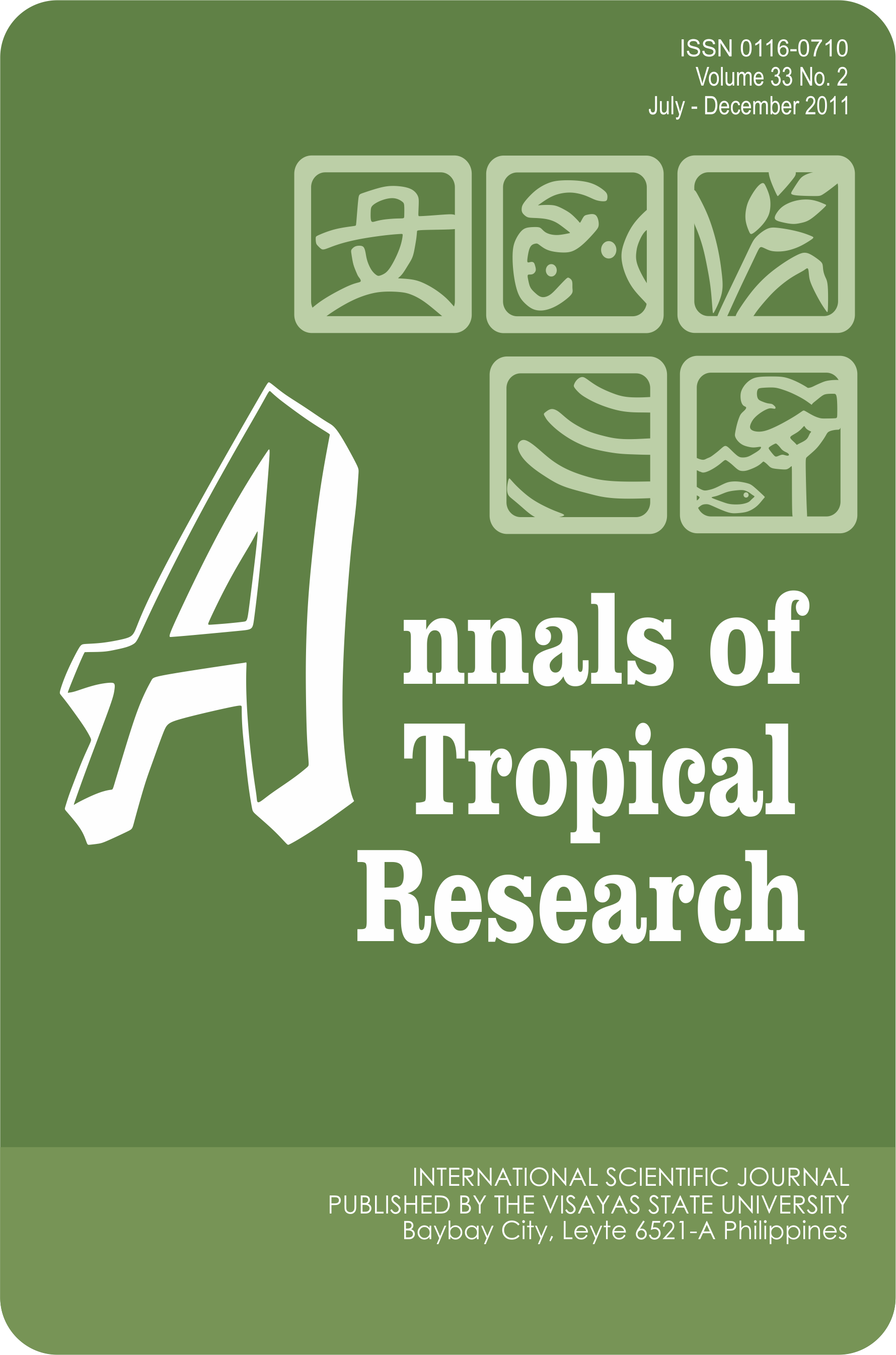Growth and Yield Performance of Selected Lowland Rice Varieties under Alternate Wet and Dry Water Management
DOI:
https://doi.org/10.32945/atr3327.2011Keywords:
lowland rice production, genetic variability, water management practices, cost and return analysisAbstract
Severe water shortage in many parts of the world has caused enormous yield losses in rice. To continue feeding the increasing number of people who are dependent on rice as staple food, there is a need to address the problem on water shortage. One possible solution may be the application of alternate wet and dry (AWD) water management in rice production.
This experiment was conducted to evaluate the growth and yield performance, as well as the profitability of selected lowland rice varieties under AWD water management. An experimental area of 450m2 with Umingan clay loam soil was laid out in randomized complete block design (RCBD) with three replications. Each replication was subdivided into six treatment plots with an area of 20m2 (5m x 4m) each. The treatments were: T1 – Masipag 45 (M45), T2 – Matatag 6 (M6), T3 – Masipag 129-2 (M129-2), T4 – Pinili-1, T5 – SL-8H and T6 – PSBRc-18 (check variety). Results showed that number of days from planting to heading and maturity, fresh straw yield (t ha-1), number of productive tillers per hill, number of filled grains per panicle and grain yield (t ha-1) differed significantly among treatments (p<0.05). Pinili-1 headed and matured the earliest and produced the highest fresh straw yield (t ha-1). However, M-129-2 and Matatag 6 had the highest number of productive tillers per hill, number of filled grains per panicle and total grain yield (t ha-1) which surpassed that pf PSB-Rc18 (check variety). Masipag 129-2 and Matatag 6 also gave the highest net profit of Php 23, 805. 00 per hectare.
Downloads
Submitted
Published
How to Cite
Issue
Section
License

This work is licensed under a Creative Commons Attribution-NonCommercial-ShareAlike 4.0 International License.











